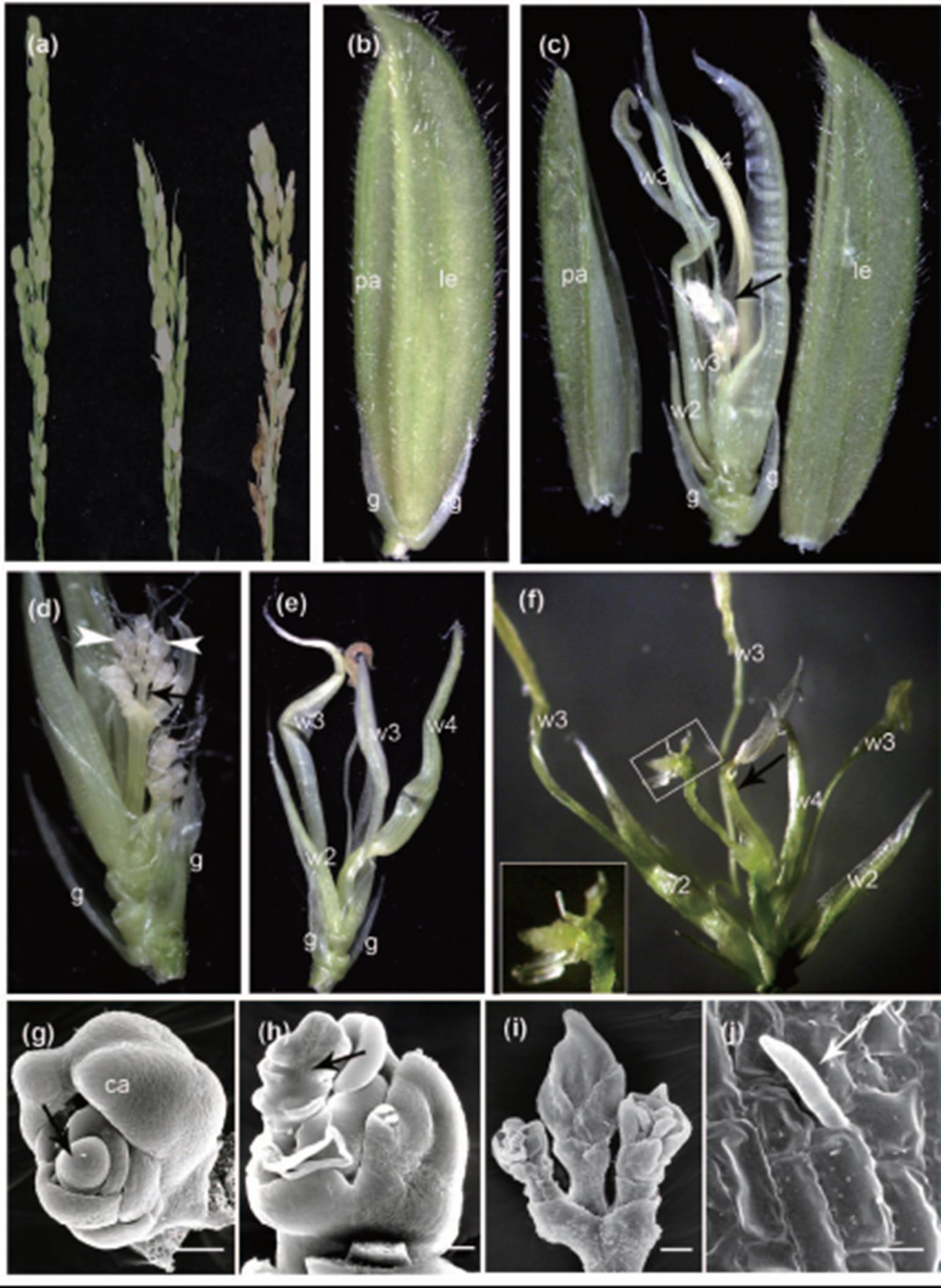In the past 20 years, much has been learned about organ and meristem identities in Arabidopsis. With regard to organ identities, the well-known ABCE model is front and center. Considerable effort has been expended to demonstrate that the genes responsible for the B and C classes are evolutionarily conserved throughout the angiosperms, and it is now clear that the genes responsible for the A class are less well conserved. However, much less was known about the conservation of function of the E class genes. In Arabidopsis, the E class genes SEPALLATA1 (SEP1), SEP2, SEP3, and SEP4 function redundantly to specify sepal, petal, stamen, and carpel identity as well as for floral determinacy. Meng Zheng’s group demonstrates that the four rice SEP homologs OsMADS1, OsMADS5, OsMADS7, and OsMADS8 function, like the SEP genes in Arabidopsis, to specify whorl 1 (palea), whorl 2 (lodicule), whorl 3 (stamen), and whorl 4 (carpel) identity as well as floral determinacy. Our findings reveal conservation of SEP-like genes in specifying floral determinacy and organ identities since the separation of eudicots and monocots about 150 million years ago. However, they indicate also monocot-specific neo- and sub-functionalization events and hence underscore the evolutionary dynamics of SEP-like genes (Plant Journal,2009 ).

Phenotypes of theOsM1/5/7/8-RNAi inflorescences and spikelets.
In the past 20 years, much has been learned about organ and meristem identities in Arabidopsis. With regard to organ identities, the well-known ABCE model is front and center. Considerable effort has been expended to demonstrate that the genes responsible for the B and C classes are evolutionarily conserved throughout the angiosperms, and it is now clear that the genes responsible for the A class are less well conserved. However, much less was known about the conservation of function of the E class genes. In Arabidopsis, the E class genes SEPALLATA1 (SEP1), SEP2, SEP3, and SEP4 function redundantly to specify sepal, petal, stamen, and carpel identity as well as for floral determinacy. Meng Zheng’s group demonstrates that the four rice SEP homologs OsMADS1, OsMADS5, OsMADS7, and OsMADS8 function, like the SEP genes in Arabidopsis, to specify whorl 1 (palea), whorl 2 (lodicule), whorl 3 (stamen), and whorl 4 (carpel) identity as well as floral determinacy. Our findings reveal conservation of SEP-like genes in specifying floral determinacy and organ identities since the separation of eudicots and monocots about 150 million years ago. However, they indicate also monocot-specific neo- and sub-functionalization events and hence underscore the evolutionary dynamics of SEP-like genes (Plant Journal,2009 ).
Phenotypes of theOsM1/5/7/8-RNAi inflorescences and spikelets.
